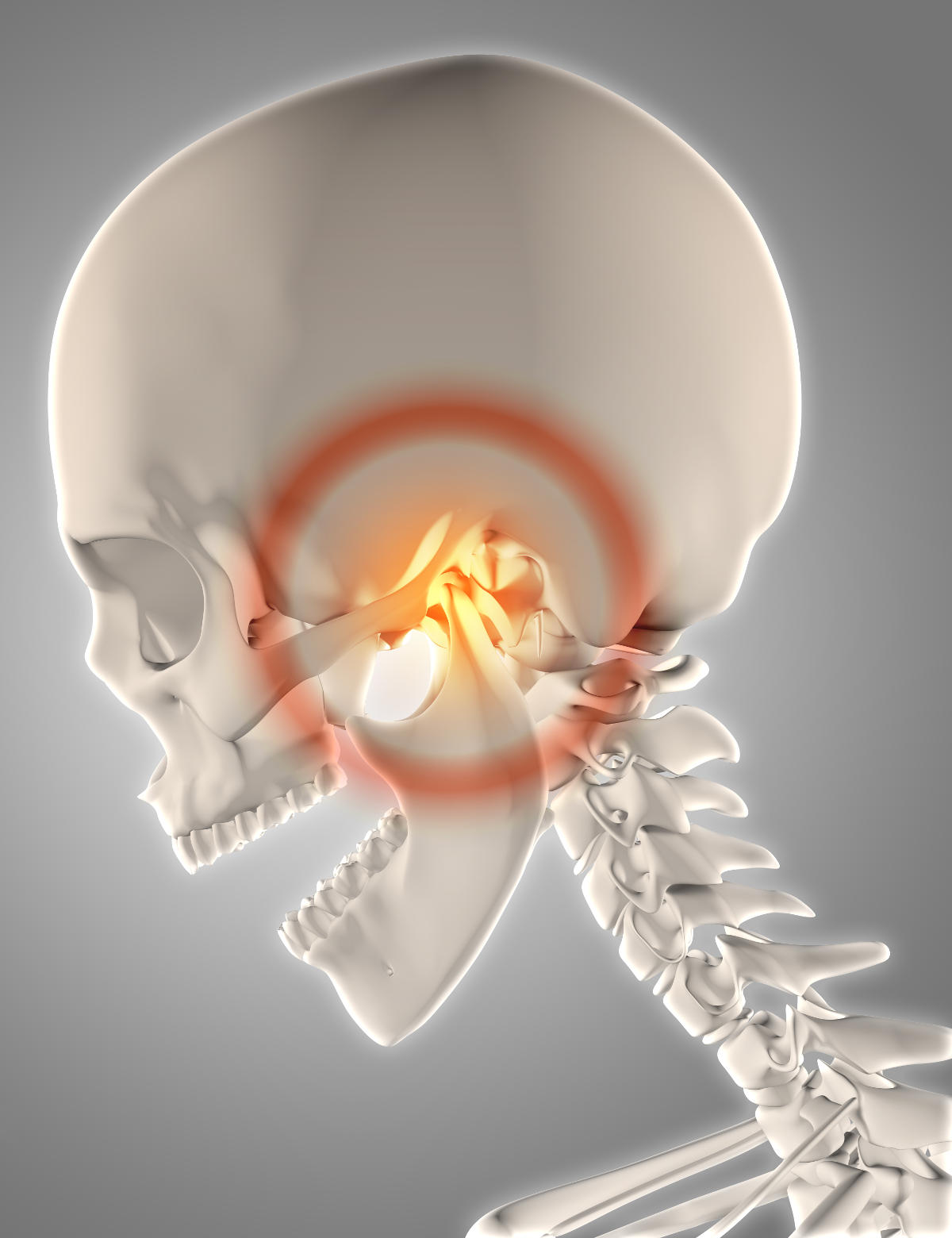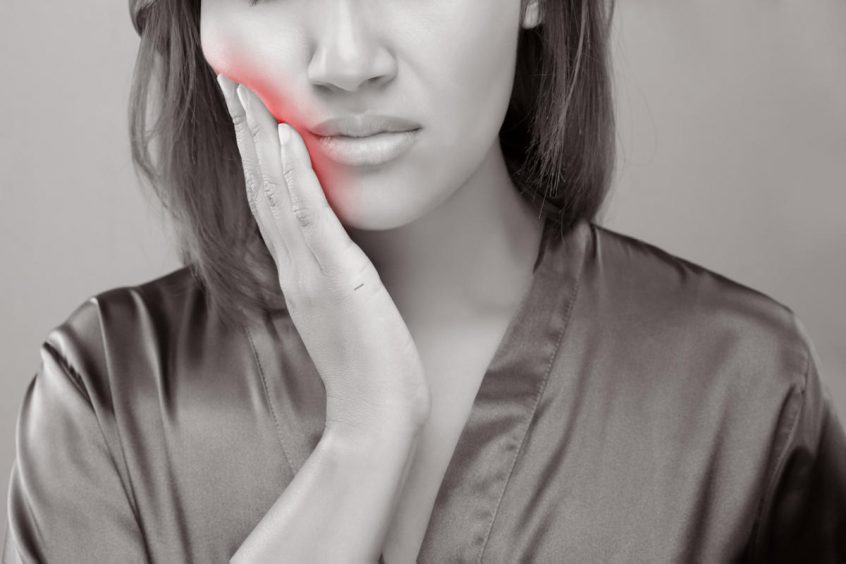What is the TMJ?
The TMJ (or temporomandibular joint) refers to the hinged portion of your jaw and is located just in front of your ears. You have two TMJs, one on each side of your head. They work together to allow you to speak, eat, and yawn.
What is TMD?
TMD (or temporomandibular dysfunction) is a broad term used to describe a wide number of jaw related problems incsluding:
- Pain in the jaw muscles or joint
- Limited ability to open your mouth (decreased movement)
- Locking or catching of the jaw
- Joint noises
- Headaches or pain related to chewing
TMD can also cause other head and neck related problems including headaches, neck problems, or ear pain. Symptoms of TMD may also include tinnitus (ringing in the ears) or hearing loss.
What Causes TMD?

There are many factors that can contribute to the development of TMD, though the exact reasons it develops are still unclear. However, there is solid evidence to support a number of causes and contributing factors including:
- Trauma, including a blow to the jaw either directly on the TMJ or around it
- Repetitive motions, such as grinding your teeth or clenching your jaw
- Wear and tear on the cartilage inside your TMJ
- Arthritis
- Stress, which can cause an increased sensitivity to pain
How Can Physiotherapy Treat TMD?
Physiotherapy can be used to treat TMD by reducing pain and inflammation in the joint and improving the movement and function of your TMJ. As in other cases, physiotherapy treats TMD in a holistic manner: Looking at both the TMJ and the other surrounding body parts that are contributing to the problem.
Some common exercises used by physiotherapists include:
- Posture correction
- Jaw movement exercises
- Manual therapy including massage, stretching, and joint mobilization
- Laser and ultrasound treatments
- Relaxation training
Since TMD and its treatment options involve your mouth and jaw your physiotherapist may also consult with your dentist or orthodontist when they are crafting your individual treatment plan.
What Can I Do At Home To Help Treat My TMD?
Your physiotherapist will create a personalized treatment plan to suit your unique medical needs. However, they will also likely include activities that you can do or should avoid, during your day to day life.
Things To Do
- Follow the exercise routine your physiotherapist has created for you
- Be aware of when you are clenching your jaw or grinding your teeth
- Avoid hard or chewy foods and opt for soft, easy to chew foods instead
- Cut tough food into smaller pieces to avoid excessive jaw strain
- Have good posture
Things To Avoid
- Excessive chewing (of your nails, gum, pen caps, etc). This allows your jaw to rest
- Yawning unnecessarily
- Holding your phone up using only your shoulder
- Resting your jaw in your hand
- Sleeping face down, since this puts unnecessary strain on your neck
Conclusion
There are a number of factors that can contribute to pain, stiffness and other jaw and TMJ related problems. These conditions are referred to under the general term TMD and can be treated by your physiotherapist using a tailored treatment plan that has been developed to suit your unique needs. Your physiotherapist may work with your dentist or orthodontist and may suggest that your plan include lifestyle changes, exercises, massage, and other treatments.

